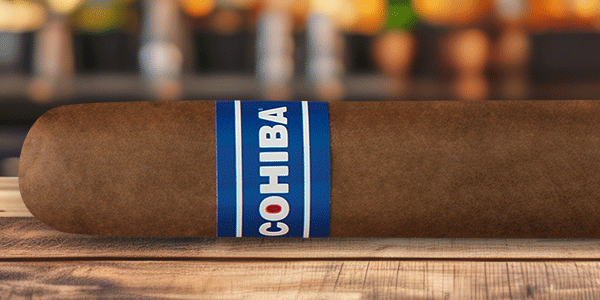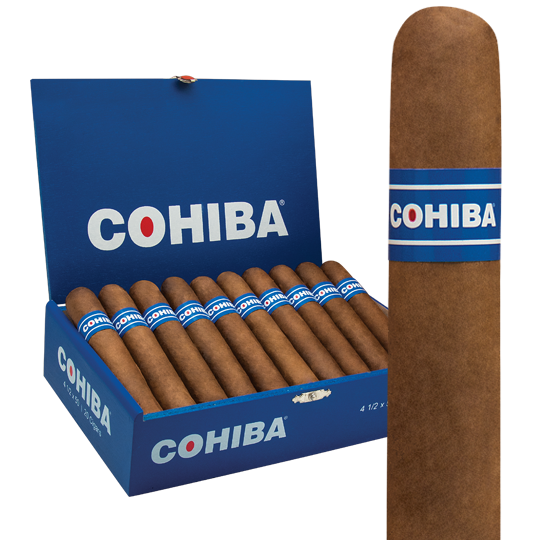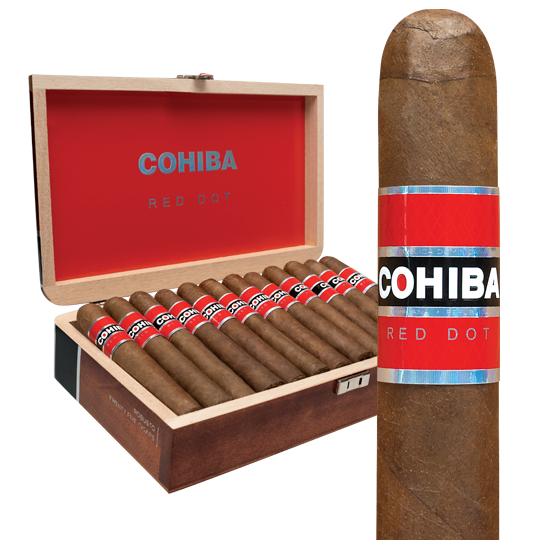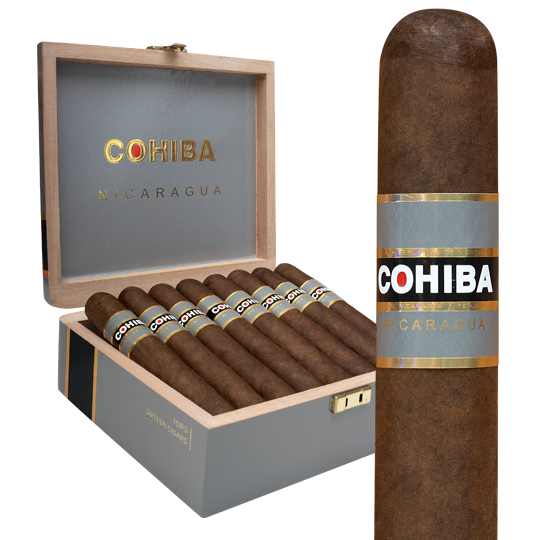Cohiba Blue Staff Review
It’s tough to imagine paying $14 or $15 for a bargain cigar, but Cohiba Blue was introduced as the “affordable Cohiba” back in 2017, so today I’m smoking a 6-by-54 Toro to find out if it’s worth every penny.
Cohiba is among the most famous Cuban brands, alongside Montecristo and Romeo y Julieta. Of course, the Cohiba cigars we get in the States are made in the Dominican Republic or Nicaragua by the brand’s parent company, General Cigar, which also owns Macanudo, Punch, and La Gloria Cubana.
While the prices of Cuban Cohibas have always been high, they have become astronomically expensive in the last couple of years, selling for several hundred dollars for one cigar, which is more than the cost of an entire box of premium cigars from a reputable brand made in the Dominican Republic or Nicaragua. These steep increases make Dominican-made Cohiba cigars, like the Red Dot I previously reviewed, look like a steal, despite averaging around $25-30 apiece in most retail shops.
Cohiba Blue cigars come in at a few bucks less, though. The Toro I’m about to fire up is just under $15. It’s blended from a medium-brown Honduran wrapper leaf with a Honduran binder and a complex recipe of Dominican, Nicaraguan, and Honduran long-fillers on the inside. The cigars come in deep-blue boxes of 20 with a blue-and-white Cohiba logo on the bands. After selecting a Toro from a new box and slipping the cellophane off, creamy notes of grain, nuts, and spice kick off the cold draw after I clip the cap. Cohiba cigars are well made, but they should be, considering the price point. A network of light veins covers the wrapper from head to foot in an otherwise pristine smoke. When I gently pinch it to inspect the cigar’s density, it seems like a firm specimen.
The Toro sparks up after a few laborious pulls while I toast the foot with my Holt’s Jetline Prestige Double Torch Lighter. Surprisingly, the draw stays tight through the first five minutes, and the burn meanders a bit. Tasting notes of earth, minerals, and burnt orange peel mingle in a tangy profile that could benefit from some sweetness. My first impression isn’t flattering. Cohiba Blue behaves more like a yard ‘gar during the first twenty minutes. A harsh aftertaste invades my nostrils and my palate after every three or four draws.
Once I get into the second half, the taste hasn’t improved much, and neither has the performance. I’m continually touching up the foot to get an even burn, which evades my efforts, while a flaky ash flutters over the edge of my ashtray every time I ash the cigar. Nearly forty minutes in, I’m finally getting notes of cocoa, grain, and smoked caramel. These sweet hints create some relief, but they’re fleeting in a cigar that mostly tastes bitter.
Cohiba Blue shows promise in a few places, but this blend requires endurance to finish, which is the last thing I want to say about any cigar, especially one that costs around $15. A tangy finish leaves a chalky aftertaste on my palate while the cigar’s charry aroma hangs in my nostrils longer than I would like. I don’t know if the blending or the construction is more to blame, or maybe I just grabbed a cigar with issues.
In my opinion, I think Cohiba Blue smokes and tastes like a basic value cigar. But it’s too pricey for the value category, even though it’s one of the cheaper Cohibas available today. Due to performance issues and price, I’m confident an 81-point rating is generous for Cohiba Blue. This should really be a $5 cigar based on the sample I smoked. With a lower price point and lower expectations, I might be persuaded to increase my rating a bit, but for now I’m okay steering clear of Cohiba Blue unless a fellow cigar lover is gifting me a handout.







